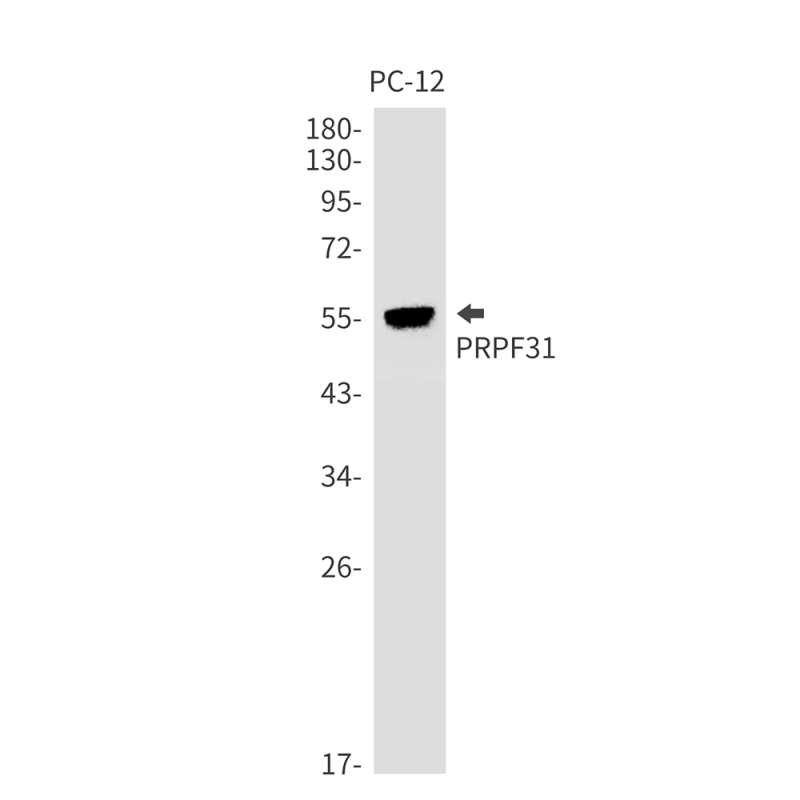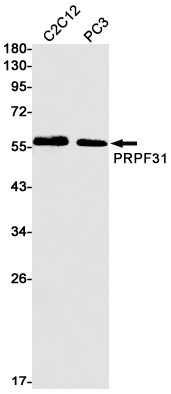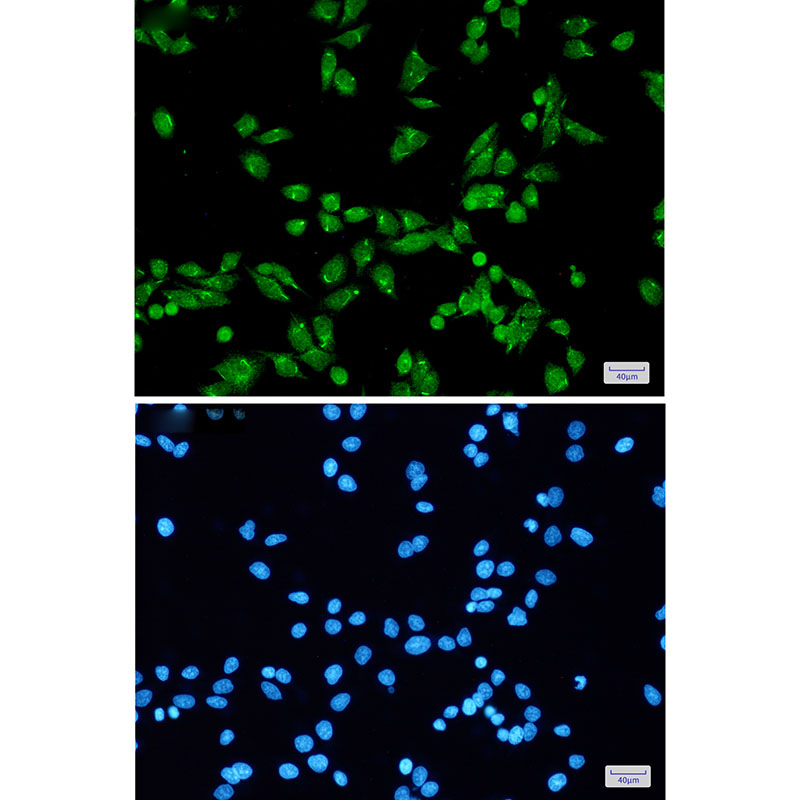


| WB | 1/500-1/1000 | Human,Mouse,Rat |
| IF | 咨询技术 | Human,Mouse,Rat |
| IHC | 咨询技术 | Human,Mouse,Rat |
| ICC | 1/50-1/200 | Human,Mouse,Rat |
| FCM | 咨询技术 | Human,Mouse,Rat |
| Elisa | 咨询技术 | Human,Mouse,Rat |
| Aliases | Protein 61K; hPrp31; U4/U6 snRNP 61 kDa protein |
| Entrez GeneID | 26121 |
| WB Predicted band size | Calculated MW: 55 kDa; Observed MW: 55 kDa |
| Host/Isotype | Rabbit IgG |
| Antibody Type | Primary antibody |
| Storage | Store at 4°C short term. Aliquot and store at -20°C long term. Avoid freeze/thaw cycles. |
| Species Reactivity | Human,Mouse,Rat |
| Immunogen | A synthetic peptide of human PRPF31 |
| Formulation | Purified antibody in TBS with 0.05% sodium azide,0.05%BSA and 50% glycerol. |
+ +
以下是3-4条关于PRPF31抗体的参考文献示例(部分内容为模拟概括,仅供参考):
---
1. **文献名称**: *PRPF31 mutations cause autosomal dominant retinitis pigmentosa via haploinsufficiency*
**作者**: Wang L, et al.
**摘要**: 该研究利用PRPF31特异性抗体进行Western blot和免疫荧光分析,发现PRPF31突变导致蛋白表达量显著降低,证实其单倍剂量不足是视网膜色素变性的致病机制。
2. **文献名称**: *Spliceosome protein dynamics during cellular stress response*
**作者**: Smith J, et al.
**摘要**: 通过PRPF31抗体进行免疫共沉淀(Co-IP)和亚细胞定位研究,揭示PRPF31在应激条件下与剪接体其他组分的动态相互作用,及其在RNA加工中的关键作用。
3. **文献名称**: *Tissue-specific expression of pre-mRNA splicing factors in mammalian retina*
**作者**: Chen Y, et al.
**摘要**: 使用PRPF31抗体进行免疫组化(IHC)分析,发现PRPF31在视网膜光感受器细胞中高表达,提示其对视网膜功能维持的重要性。
4. **文献名称**: *Functional characterization of PRPF31 variants using in vitro models*
**作者**: González-Cordero A, et al.
**摘要**: 通过CRISPR/Cas9构建PRPF31敲除细胞系,结合PRPF31抗体验证蛋白缺失,并证明突变体导致剪接缺陷和细胞凋亡增加。
---
**注**:以上文献为示例性内容,实际文献需通过PubMed、Google Scholar等平台检索关键词“PRPF31 antibody”或“PRPF31 immunohistochemistry”获取。建议结合具体研究方向筛选近年高质量论文。
The PRPF31 antibody is a tool used to detect PRPF31 (pre-mRNA processing factor 31), a protein critical for spliceosome assembly and pre-mRNA splicing in eukaryotic cells. PRPF31 is a core component of the U4/U6.U5 tri-snRNP complex, playing a key role in maintaining RNA splicing fidelity. Mutations in the PRPF31 gene are linked to autosomal dominant retinitis pigmentosa (adRP), a degenerative eye disorder causing progressive vision loss. Research suggests these mutations lead to haploinsufficiency, where reduced protein levels impair spliceosome function, particularly in stress-sensitive retinal cells.
PRPF31 antibodies are widely used in molecular and cellular biology to study the protein’s expression, localization, and interactions. They enable techniques like Western blotting, immunofluorescence, and immunohistochemistry, aiding in investigations of PRPF31’s role in retinal homeostasis and disease mechanisms. Commercially available antibodies are typically raised in hosts like rabbits or mice, targeting specific epitopes within the PRPF31 sequence. Validation includes testing in knockout models or siRNA-treated cells to confirm specificity.
Understanding PRPF31’s function through antibody-based assays provides insights into splicing-related pathologies and potential therapeutic strategies for adRP. However, challenges remain in standardizing antibody performance across experimental conditions, emphasizing the need for rigorous validation in disease-relevant models.
×